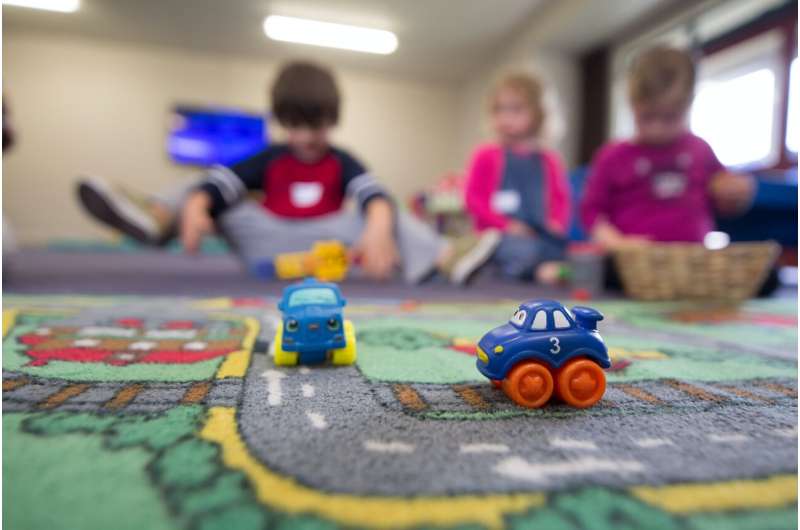
A study at the Department of Education, University of Jyväskylä, Finland, has investigated the contribution of young children beginning in early childhood education and care (ECEC) during their first days in the new environment. The findings showed that young, one-year-old children have resources to draw upon in this new setting. The researchers identified different positions the newcomers took in the group.
The study is published in the journal Contemporary Issues in Early Childhood.
The beginning of early childhood education has been characterized as a significant and potentially stressful transition in a young child’s life. In such a situation, the child encounters new pedagogical environments and establishes new social relationships.
In the interaction, young newcomers in ECEC are significant contributors, influencing both their own and other children‘s and adults’ activities in the group.
“Even though there is a lot going on and there are various routines at the ECEC center,” says Senior Lecturer (emerita) Raija Raittila. “The initiatives of children in their first day in ECEC are very significant for how the activities are organized and what is done there on such a day.”
The study found that daily life in ECEC is often organized according to the way that a young newcomer joins in the activities. On the first day, the ECEC educators followed the child’s initiatives. The activities and plans were adapted to support the newcomer’s contribution. It seemed that a specific resource for a newcomer was the curiosity to explore the new place and possibilities for action. This was supported and children were encouraged to do so.
Rules can be flexible for a newcomer
The first days in ECEC highlight the special position given to new children for practicing and getting used to the ECEC center’s rules and routines. Sometimes newcomers are allowed to do some things that are forbidden to children already accustomed to the ECEC setting.
“It is possible to be flexible with the rules and routines a bit when a newcomer is taking hold of the space and daily life at the ECEC center,” says the leader of the research project, Professor Niina Rutanen. Hence, when a new child starts in a group, it calls for flexibility from other children as well as recognizing the special position of the newcomer.
Skills learned at home can also be applied at the ECEC center
The ECEC center offers young newcomers a place where they can use their previously acquired skills. For example, at meals, a child can apply the skills they have learned at home and participate equally with others.
Although starting in the center brings plenty of new things to a young child’s life, many of which call for practice and adaption, children are not just novices but also contributors like their more experienced peers in the ECEC setting. At the initial stage, it is important to pay attention to all the skills that the child already has and that help him or her participate in ECEC activities. This opens the easiest route to the daily life of the center.
“Together with educators, children explore everything new that starting in ECEC brings with it, and it also involves a lot of joy, even if there are some homesick moments as well,” says Senior Researcher Mari Vuorisalo.
The researchers noted that starting in ECEC always means joining a specific socially, culturally and physically defined space. At the same time, however, each new entrant modifies the space, using their individual resources.
More information:
Raija Raittila et al, Constructing the space of transition within the early childhood education and care pedagogical environment: A child’s resources and positions, Contemporary Issues in Early Childhood (2024). DOI: 10.1177/14639491241246120
Provided by
University of Jyväskylä
Citation:
For a young child, the first day in day-care center opens the door to a new world (2024, September 3)
retrieved 3 September 2024
from https://phys.org/news/2024-09-young-child-day-center-door.html
This document is subject to copyright. Apart from any fair dealing for the purpose of private study or research, no
part may be reproduced without the written permission. The content is provided for information purposes only.
